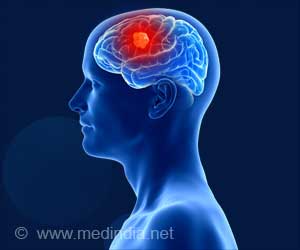Age related macular degeneration that can cause blindness can be linked to underlying heart diseases
- Eye disease, in particular age-related macular disease (AMD) can cause blindness and can be correlated to underlying heart disease
- Changes in your eyes that can give out clues to underlying heart disease //
- Precautionary measures that can be taken to avoid underlying heart diseases to go undetected
A specific form of age related macular degeneration (AMD), an eye disease that can blur your vision leading to blindness is now correlated with underlying heart diseases or damages caused by previous history of heart attacks, heart failure, heart damage or carotid artery diseases, as per a study conducted in New York Eye and Ear Infirmary of Mount Sinai (1✔ ✔Trusted Source
Subretinal drusenoid deposits are strongly associated with coexistent high-risk vascular diseases
Go to source).
“For the first time, we have been able to connect these specific high-risk cardiovascular diseases to a specific form of AMD, the one with subretinal drusenoid deposits (SDDs),” explains lead author R. Theodore Smith, MD, PhD, Professor of Ophthalmology at the Icahn School of Medicine at Mount Sinai. “This study is the first strong link between the leading cause of blindness, AMD, and heart disease, the leading cause of death worldwide. Furthermore, we also have strong evidence for what actually happens: the blood supply to the eye is directly diminished by these diseases, either by heart damage that diminishes blood supply throughout the body, or from a blocked carotid artery that directly impedes blood flow to the eye. A poor blood supply can cause damage to any part of the body, and with these specific diseases, the destroyed retina and leftover SDDs are that damage. Retinal damage means vision loss, and can lead to blindness”.
Can you go Blind Because of Heart Diseases?
Yes, as per recent research data you are nine times more likely to go blind if you have underlying heart disease that goes undetected and untreated.In this study, researchers analyzed the eyes of 200 AMD patients and asked them to answer a questionnaire about their history of heart disease. Of the 200 patients, 97 had deposits in the sub-retinal region of the eyes (subretinal drusenoid deposits (SDDs)) and 103 had drusen in the retinal region. Forty-seven of the 200 had severe heart disease (19 had heart damage from heart failure or heart attack, 17 serious valve disease, and 11 stroke stemming from the carotid artery). Forty of the 47 (86 percent) had SDDs. The researchers concluded that AMD patients with these severe cardiovascular diseases and stroke were nine times more likely to have SDDs than those without them (1✔ ✔Trusted Source
Subretinal drusenoid deposits are strongly associated with coexistent high-risk vascular diseases
Go to source).
This study demonstrates the fact that ophthalmologists may be the first physicians to detect systemic disease, especially in asymptomatic patients.
How can Heart Disease Cause Blindness?
Sudden changes to your vision could be due to a blockage in the blood vessels of the eye, which can foreshadow a more serious stroke in the brain. And with increasing evidence it is suggested that early damage to tiny blood vessels in the eyes may predict cardiovascular disease (2✔ ✔Trusted SourceThe eye and the heart
Go to source).
How to Identify Underlying Heart Disease Through Your Eyes?
The most primary change that once can consider is any kind of vision change such as blurring, unable to see, dark areas, or shadows in the vision.Other unusual eye changes that can give you clues to possible heart problems includes small, yellowish bumps around the eyes, or pupils that widen and constrict with the heartbeat (3✔ ✔Trusted Source
Window to the circulatory system: Ocular manifestations of cardiovascular diseases
Go to source).
What Precautions can one Follow to Detect Heart Conditions at Early Stage?
Routine eye Check-up- People ages 40 to 64 who are otherwise healthy should get a complete eye exam from an ophthalmologist once every two to four years.
- After age 65, you should receive a complete eye exam every one to two years.
- People with type 2 diabetes should get a complete eye exam at the time of diagnosis and after that annually (4✔ ✔Trusted Source
Routine eye examinations for persons 20-64 years of age: an evidence-based analysis
Go to source).
- Regular examinations and screenings related to heart health should begin at 20 years old, with most tests being performed every 2 to 4 years.
- Guidelines also recommends the assessment of risk factors, including lipid levels, every 4 to 6 years in adults 20 to 79 years.
This study has opened the door for a multidisciplinary collaboration between the Ophthalmology, Cardiology and Neurology and with further and stronger research data, proper precautionary guidelines can be laid that can help medical fraternity and the patients in early diagnosis of heart diseases.
References:
- Subretinal drusenoid deposits are strongly associated with coexistent high-risk vascular diseases - (https://bmjophth.bmj.com/content/7/1/e001154)
- The eye and the heart - (https://pubmed.ncbi.nlm.nih.gov/23401492/)
- Window to the circulatory system: Ocular manifestations of cardiovascular diseases - (https://pubmed.ncbi.nlm.nih.gov/32340480/)
- Routine eye examinations for persons 20-64 years of age: an evidence-based analysis - (https://pubmed.ncbi.nlm.nih.gov/23074485/)
Source-Medindia
















